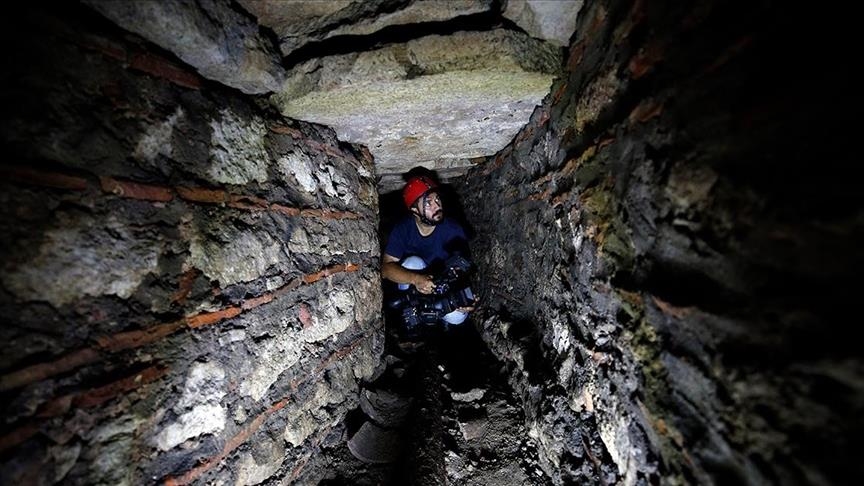

By Anadolu Agency
ISTANBUL
An Anadolu Agency team got access to the largest underground structures of Istanbul’s iconic Hagia Sophia Grand Mosque.
Described as the “8th wonder of the world” by many people, Hagia Sophia’s galleries, tunnels, cellars, and underground tomb structures bear witness to its majestic history.


Hasan Firat Diker, an architecture and design professor at the Istanbul-based Fatih Sultan Mehmet Foundation University, documented the underground tunnels and culverts, which are 1,500 years old.
Diker and his team mapped in 3D the tunnels and culverts under and around Hagia Sophia.
“We aimed to document the infrastructure of Hagia Sophia, as well as its superstructure, in an architectural sense and to raise awareness for the elimination of existing problems,” he said, displaying the historical underground structures to the Anadolu Agency team.
Researching, preserving, and documenting the underground structures is important both in terms of protecting the building it is related to and revealing the other underground structures of the city it is related to, he noted.
Hagia Sophia, the largest church built by the Byzantine Empire in Istanbul, was constructed three times, he said.
“The construction of Hagia Sophia, which has survived until today, started in 532 and was completed in 537,” he said, adding that the main space in this building is covered with bricks on four arches supported by four piers.
“The tomb structure, located just in front of the northeast facade of Hagia Sophia, is four meters below ground. This structure, known as ‘Hippoje’, is not an underground infrastructure built during the construction of Hagia Sophia, it is an underground structure dating back to the fourth century. This structure is the oldest architectural work that could be found in the vicinity of Hagia Sophia,” he added.
Hagia Sophia was exposed to uncontrolled rainwater before it was cleaned, he said, adding that some four tons of rubble and mud were evacuated within the scope of the cleaning work carried out last year.
Noting that there are cellar structures two meters below the garden in front of the northwest facade, he said these are the infrastructure spaces of the original atrium of Hagia Sophia.
Most of the underground spaces of Hagia Sophia were built for plumbing and ventilation, he said, adding that it is difficult to cross the tunnels due to narrow spaces.
“Even breathing is not easy in these tunnels… When you think about the time they were built, we can understand how difficult it was for people to move in these dark places and it is not possible to use them for any other purpose,” he added.
Hagia Sophia served as a church for 916 years and 86 years as a museum, but from 1453 to 1934 – nearly 500 years – it was a mosque.
In 1985, Hagia Sophia was added to the UNESCO World Heritage List. It is among Türkiye’s top tourism destinations and remains open for domestic and foreign visitors.
We use cookies on our website to give you a better experience, improve performance, and for analytics. For more information, please see our Cookie Policy By clicking “Accept” you agree to our use of cookies.
Read More